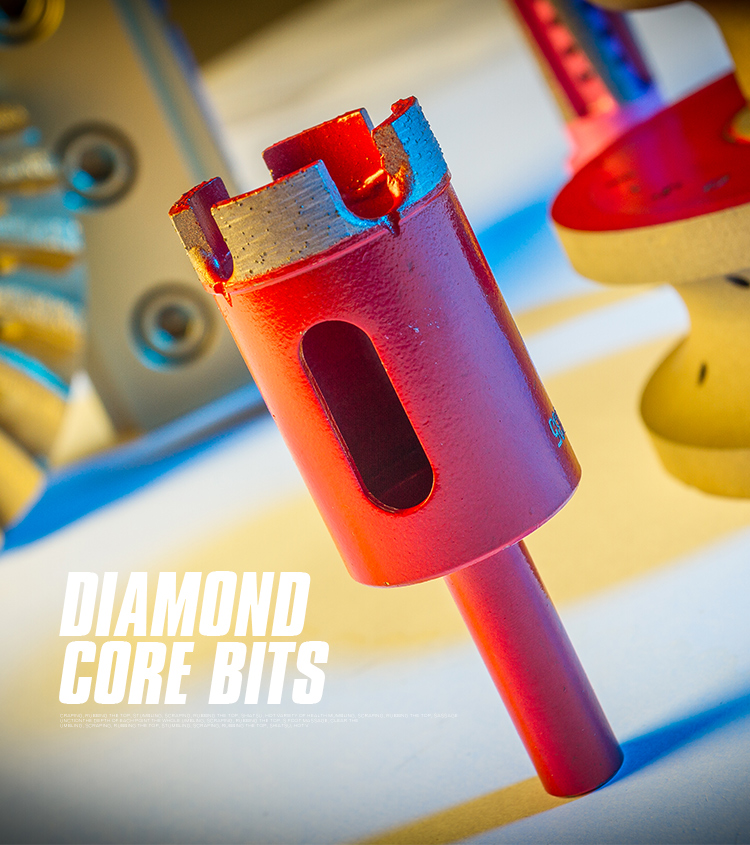The use process of the diamond bit is divided into six parts: pre-drilling preparation, button-up, down-drilling, reaming, modeling and normal drilling.
One. Preparation of diamond bit before drilling
1. Check whether the previous diamond bit has any damage to the bit body, missing teeth, etc., and make sure that the bottom of the well is clean and free of falling objects.
2. Carefully handle the diamond bit, and place the diamond bit on a rubber pad or wooden board. It is forbidden to place the diamond bit directly on the iron plate.
3. Check whether the cutting teeth of the diamond drill are damaged, whether there is foreign matter in the diamond drill, whether there is an O-ring in the nozzle hole, and install the nozzle as required.


Two.Diamond bit buckle
1. Clean the diamond bit male or female button and apply thread oil.
2. Put the shackle on the diamond bit, lower the drill string to make it contact with the male or female button and make it up.
3. Put the diamond bit and the shackle into the turntable to make up the center, and then tighten the thread according to the recommended torque value.
Three. Drill down
1. The diamond bit should be lowered slowly, especially through the turntable, blowout preventer and casing hanger, so as to protect the cutting teeth.
2. Pay attention to the blocked well section that occurred during the last trip, and make the drill bit pass slowly when encountering shrinkage and dog legs during the drilling process.
3. When there is about 1 single root from the bottom of the well, start to rotate at the drilling speed of 50~60rpm and turn on the pump with a rated displacement to flush the bottom of the well.
4. Pay attention to the weight table and torque to make the diamond bit touch the bottom of the hole smoothly.
Four. Diamond drill bit
1. It is not recommended to use diamond drill bits for well section reaming.
2. If scribing is necessary, it should be swiped at the rated displacement and slow and low torque.
Five.Diamond bit modeling
1. Keep the rated displacement and lower the diamond bit to the bottom of the well.
2. Use slow drilling for at least 1m to establish a bottom hole model.
3. Increase the drilling pressure to the optimum value of normal drilling with an increment of 10kN each time, and it is strictly forbidden to pressurize too hard, which will cause the early damage of the diamond bit.
4. Keep the WOB constant and adjust the ROP to obtain the best combination of drilling parameters.
Six. The diamond bit drills normally
1. When encountering strong abrasive or hard sandy mudstone, reduce the drilling speed to prolong the life of the diamond bit.
2. Adjust the ROP and diamond bit to maintain the best drilling performance when encountering formation changes or interlayers.
3. Pay attention to the following points each time you receive an order:
3.1 Restore the pump stroke and check the riser pressure.
3.2 Turn on the pump before the diamond bit touches the bottom of the well, and slowly lower the diamond bit to the bottom of the well at a drilling speed of 50~60rpm.
3.3 Slowly restore the pressure to the original diamond bit, and then increase the drilling speed to the original drilling speed.







